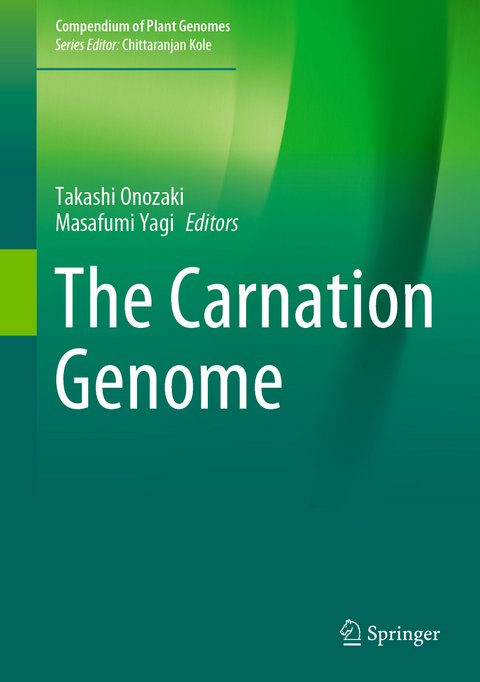
The Carnation Genome
Springer Verlag, Singapore
978-981-15-8260-8 (ISBN)
The carnation is one of the most important ornamental flowers in the world, along with the chrysanthemum and the rose. The genus Dianthus is a member of the Caryophyllaceae and includes more than 300 species of annuals and evergreen perennials. Modern carnation cultivars are the product of highly complex hybridization, owing to their long history of breeding.
The carnation genome was first sequenced in ornamentals by a Japanese research team in 2013. The carnation has been genetically improved over the years, and there are various types of flower colors, shapes, patterns, and sizes. In this book, the molecular mechanism of flower color development and the transposable elements responsible for this diversity are studied in detail. In addition, it presents breeding and physiological research for improving flower vase life, one of the most important traits in ornamentals, based on a model of ethylene susceptible flowers. To improve selection efficiency, genomic analysis tools including DNA markers and genetic linkage maps are also highlighted. In closing, the book discusses mutation breeding technologies such as ion-beam irradiation and genetically modified carnations.
Takashi Onozaki Institute of Vegetable and Floriculture Science, NARO, Japan Masafumi Yagi Institute of Vegetable and Floriculture Science, NARO, Japan
Draft genome sequence.- Transcriptome analysis in carnation.- Construction of linkage maps and development of useful DNA markers for carnation breeding.- Recent topics on flower opening and senescence in cut carnation flowers.- Cross breeding for flower vase life and their molecular mechanism.- Flower Pigments Responsible for Cyanic, Yellow, and Cream-white Coloration in Carnation.- Carotenoid and chlorophyll accumulation in flower petals of carnation.- Molecular mechanisms of carnation flower colors via anthocyanin and flavonoid biosynthetic pathways.- Advances in mutation technology to create novel carnation varieties.- Development of violet transgenic carnations and analysis of inserted transgenes.- The characteristics of flower scents in carnations.- Breeding of interspecific hybridization among carnation (Dianthus caryophyllus L.), Dianthus japonicus Thunb. and Dianthus × isensis Hirahata et Kitam.- Carnation (Dianthus caryophyllus) cultivars developed for Aichi Prefecture
| Erscheinungsdatum | 15.01.2021 |
|---|---|
| Reihe/Serie | Compendium of Plant Genomes |
| Zusatzinfo | 60 Illustrations, color; 25 Illustrations, black and white; XXII, 183 p. 85 illus., 60 illus. in color. |
| Verlagsort | Singapore |
| Sprache | englisch |
| Maße | 178 x 254 mm |
| Themenwelt | Naturwissenschaften ► Biologie ► Botanik |
| ISBN-10 | 981-15-8260-2 / 9811582602 |
| ISBN-13 | 978-981-15-8260-8 / 9789811582608 |
| Zustand | Neuware |
| Haben Sie eine Frage zum Produkt? |
aus dem Bereich


